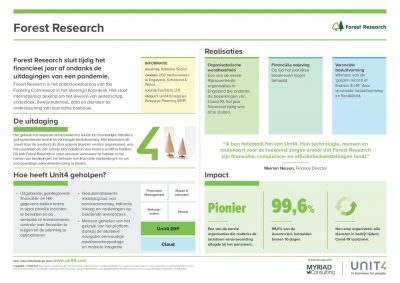Highlights:
- Engaged employees are more likely to contribute to the organization at a higher level, both in terms of productivity and longevity of the association.
- Employees who undergo a well-structured onboarding process are more likely to develop a connection with the organization, fostering a sense of belonging and commitment.
As per a report by Statista, employee engagement in the United States has declined over the past few years. Although it peaked at 36% in 2020, the subsequent two years have seen a downward trend in engagement levels.
Improving employee engagement is crucial to business success in the ever-evolving aspect of the modern workforce. The heightened focus on employee engagement is a response to the evolving nature of work and the recognition that the success of a business is intricately linked to the happiness and engagement of its employees.
What Is The Importance Of Improving Employee Engagement?
Paychex HR Consultant Rob Sanders defines employee engagement as “the behavior and attitude characterized by a deep and broad connection to one’s organization and role.” This connection, fueled by an employee’s commitment to the company’s success and performance, creates a symbiotic relationship wherein engaged employees actively seek ways to contribute positively.
But what do engaged employees look like?
Identifying engaged employees
While engagement can vary across organizations, common traits define an engaged employee. These include a proactive approach to providing feedback and suggestions for business improvement, a preference for seeking new opportunities rather than complaining about workload, an ability to inspire passion about the company’s mission among clients and colleagues, and a willingness to refer others to join the organization.
Engaged employees become ambassadors, embodying and promoting the company’s culture and values.
The significance of improving employee engagement
The benefits of improving employee engagement are manifold and directly impact the success and growth of a business. Engaged employees are more likely to contribute to the organization at a higher level, both in terms of productivity and longevity of the association.
Reduced turnover rates translate to significant cost savings over time, while engaged employees establish valuable work relationships and serve as living embodiments of the company’s culture and core values.
Conversely, when employees become disengaged, a chain reaction of dissatisfaction may ensue. Absenteeism increases, and employees may neglect opportunities for career progression or fail to leverage their expertise for the organization’s benefit. In such instances, the employee and the company miss out on opportunities for mutual success.
Now that we’ve established the importance of fostering a highly engaged workforce, the focus shifts towards the “how.”
How to Improve Employee Engagement?
Improving employee engagement in the workplace is an ongoing and multifaceted initiative that demands regular review and analysis. While the onboarding process should ensure that new employees feel welcomed and engaged from day one, maintaining engagement requires a continuous effort. Here are some strategies to reinforce and enhance employee engagement:
-
Strategic hiring:
The foundation of engagement begins with hiring the right people. Candidates should possess the necessary job-related skills and a cultural fit with the organization. Sharing insights about the company culture is crucial during recruitment, enabling qualified candidates to determine if they align well with the organization.
-
Structured onboarding:
A robust onboarding program lays the groundwork for sustained employee engagement. Employees who undergo a well-structured onboarding process are more likely to develop a connection with the organization, fostering a sense of belonging and commitment.
-
Clear communication:
Transparency in communication is directly proportional to employee motivation. Clear communication about the company’s future in uncertain economic times helps alleviate concerns and improves employee engagement and retention. Ensuring that employees are informed gives them a sense of security and involvement.
-
Continuous training:
Offering continuous training opportunities is a key driver of employee engagement. Leveraging learning tools, technologies, and industry conferences can help employees enhance their skills and knowledge, demonstrating the company’s commitment to their professional development.
-
Technological empowerment:
Providing access to technology and involving employees in decisions related to process improvements enhances engagement. Open communication channels for suggestions and feedback demonstrate that the company values and considers the expertise of its workforce.
-
Encouraging initiative:
Empowering employees to suggest new methods or products fosters a sense of ownership and contribution to the company’s success. Recognizing and appreciating their impact cultivates confidence and motivates employees to seek ways to enhance productivity proactively.
-
Holistic benefits:
While competitive pay is essential, a comprehensive benefits program is an effective employee engagement strategy. Addressing healthcare, retirement, and financial well-being helps alleviate stress and enhances engagement.
-
Work-life balance:
Promoting healthy work habits and maintaining a work-life balance are integral to employee engagement. Managers should use employee engagement and performance management measures to ensure employees work smartly and maintain a healthy equilibrium. Regular reviews, such as examining a Paid Time Off (PTO) report, can help identify areas of concern.
-
Year-round monitoring:
Employee engagement is dynamic and can shift based on various factors. Employers should monitor engagement throughout the year through surveys and feedback mechanisms. This ongoing assessment helps identify areas for improvement and ensures that engagement strategies remain aligned with evolving workplace dynamics.
-
Corporate social responsibility:
Employees increasingly seek meaning and purpose in their work. Committing to a corporate social responsibility plan and communicating it to employees can elevate engagement. Volunteering activities aligned with company values provide a platform.
In Summary
Fostering a proactive and committed workforce is imperative to improve employee engagement.
Engaged employees, characterized by traits like feedback initiative and passion for the company’s mission, serve as ambassadors, embodying organizational culture. The importance of improving engagement is evident in its manifold benefits, including heightened productivity and reduced turnover costs.
Conversely, disengagement leads to absenteeism and missed opportunities. It is essential to address this with a strategic approach, which is vital. By prioritizing strategic hiring, structured onboarding, clear communication, continuous training, technological empowerment, initiative encouragement, holistic benefits, work-life balance, year-round monitoring, and corporate social responsibility, organizations can cultivate a highly engaged workforce, propelling mutual success.
Expand your knowledge of HR by exploring our extensive selection of HR-related whitepapers.








































